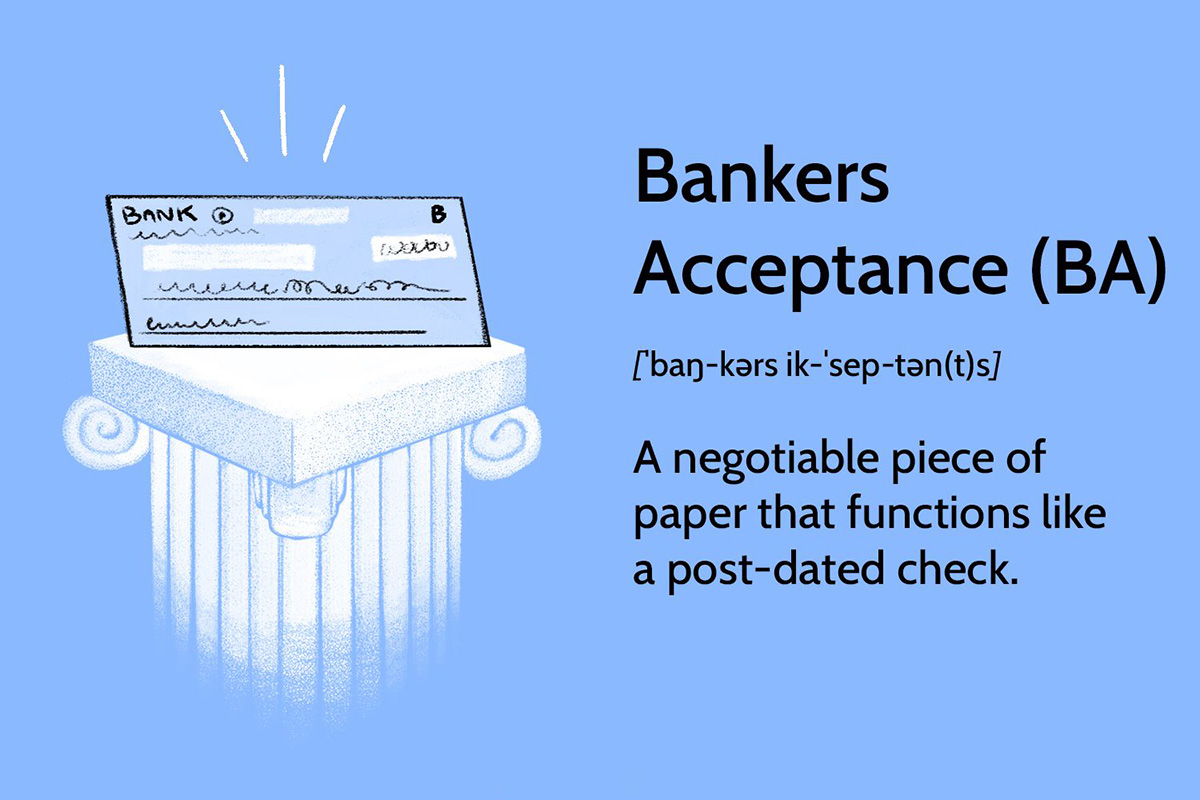

Finance
What Is Aggregate Insurance Coverage
Modified: December 30, 2023
Discover the importance of aggregate insurance coverage in the world of finance. Protect your financial assets and safeguard against unexpected losses.
(Many of the links in this article redirect to a specific reviewed product. Your purchase of these products through affiliate links helps to generate commission for LiveWell, at no extra cost. Learn more)
Table of Contents
- Introduction
- Definition of Aggregate Insurance Coverage
- How Aggregate Insurance Coverage Works
- Types of Aggregate Insurance Coverage
- Advantages and Benefits of Aggregate Insurance Coverage
- Limitations and Exclusions of Aggregate Insurance Coverage
- Factors to Consider When Choosing Aggregate Insurance Coverage
- Conclusion
Introduction
When it comes to protecting your financial assets, insurance coverage plays a vital role. However, there are different types of insurance policies, each with its own nuances and benefits. One such policy is aggregate insurance coverage.
Aggregate insurance coverage is a specialized form of insurance that protects individuals and businesses from unexpected financial losses that may occur over a specific period of time. Unlike traditional insurance policies that cover individual claims, aggregate coverage provides protection against the cumulative losses within a specified timeframe.
This type of coverage is particularly relevant for businesses that are exposed to multiple risks and potential liabilities. Whether it’s a construction company dealing with potential property damage claims or a professional services firm facing potential lawsuits, aggregate insurance can offer peace of mind and financial security.
In this article, we will delve deeper into the concept of aggregate insurance coverage, understanding how it works, the different types available, its advantages and limitations, and key factors to consider when choosing a policy.
Definition of Aggregate Insurance Coverage
Aggregate insurance coverage, also known as aggregate limit insurance, is a policy that provides protection against multiple claims or losses that occur within a specific time period. Unlike traditional insurance policies that have per-occurrence limits, aggregate coverage sets a cap on the total amount the insurer will pay for all claims during the policy term.
The aggregate limit is the maximum amount that the insurer will pay out for all covered claims, regardless of the number of individual claims or the total amount of each claim. This means that once the aggregate limit is reached, the policyholder is responsible for any additional losses or claims for the remainder of the policy term.
For example, let’s say a construction company has an aggregate insurance policy with a limit of $1 million for one year. If the company faces four separate claims throughout the year, each of which amounts to $300,000, the aggregate coverage will cover the first three claims in full. However, for the fourth claim, the insurer will only pay out up to $100,000, as it will have reached the limit.
It’s important to note that aggregate insurance coverage can be applied to various types of insurance policies, such as general liability insurance, professional liability insurance, and directors and officers liability insurance. The specific terms and conditions of the coverage may vary depending on the policy and the insurance provider.
In summary, aggregate insurance coverage provides protection against multiple claims or losses that occur within a specific time period, with a predetermined maximum payout known as the aggregate limit.
How Aggregate Insurance Coverage Works
Understanding how aggregate insurance coverage works is essential to making the most of this type of policy. Here is an overview of the key elements and mechanics involved:
- Premium Calculation: When purchasing aggregate insurance coverage, the premium is usually based on several factors, including the nature of the business, past claims history, coverage limits, and the desired policy period. The premium amount reflects the level of risk associated with the business and the potential aggregate losses.
- Policy Period: Aggregate insurance coverage typically has a specific policy period, usually one year. During this period, the policyholder is covered for any eligible claims that occur within the timeframe.
- Notification of Claims: In the event of a covered loss or claim, the policyholder must promptly notify the insurance provider. It is crucial to adhere to the notification requirements specified in the policy to ensure that claims are processed efficiently.
- Aggregating Claims: The purpose of aggregate insurance coverage is to provide protection against the cumulative losses during the policy period. Therefore, the insurance provider keeps track of all the claims and losses throughout the year. Once the aggregate limit is reached, the insurer will not be liable for any further claims, regardless of their individual amount.
- Claim Settlement: If a claim is within the aggregate limit, the insurer will typically settle it according to the terms of the policy. However, if the cumulative amount of claims exceeds the aggregate limit, the policyholder is responsible for the remaining losses or claims.
- Renewal and Review: At the end of the policy period, the aggregate insurance coverage is up for renewal. The insurance provider will evaluate the claims experience of the policyholder to determine the new premium amount for the next policy period. It is essential for the policyholder to review their coverage regularly and adjust it according to changing business needs.
It’s important to note that each insurance policy may have specific terms and conditions regarding the mechanics of aggregate coverage. Understanding the details of the policy is crucial to ensure proper coverage and avoid any surprises or gaps in protection.
By understanding how aggregate insurance coverage works, businesses can make informed decisions, manage their risks effectively, and protect themselves from potential financial losses.
Types of Aggregate Insurance Coverage
Aggregate insurance coverage can be applied to various types of insurance policies, depending on the specific needs and risks of the insured. Here are some common types of insurance coverage that can utilize aggregate limits:
- General Liability Insurance: General liability insurance provides coverage for claims arising from bodily injury, property damage, personal injury, and advertising injury. Aggregate coverage in general liability insurance sets a maximum limit for all covered claims during the policy period.
- Professional Liability Insurance: Professional liability insurance, also known as errors and omissions insurance, is designed to protect professionals from claims arising due to professional negligence or errors. It covers industries such as law, accounting, consulting, and healthcare. Aggregate coverage ensures that all claims that arise from professional services are accounted for within the policy term.
- Product Liability Insurance: Product liability insurance provides coverage for claims arising from injuries or damages caused by a defective product. With aggregate coverage, the limit represents the total amount the insurance provider will pay for all claims related to product liability during the policy period.
- Directors and Officers Liability Insurance: Directors and officers liability insurance protects company directors and officers from claims alleging mismanagement, breach of fiduciary duty, or other wrongful acts. Aggregate limits in this type of insurance set a maximum coverage amount for all covered claims within the policy term.
- Commercial Umbrella Insurance: Commercial umbrella insurance provides additional coverage that extends beyond the limits of primary liability policies. It can have aggregate limits, which means it provides protection for the cumulative losses that exceed the limits of the primary policies.
These are just a few examples of the types of insurance coverage that may incorporate aggregate limits. It’s important to consult with an insurance professional to determine the specific types of coverage that align with your business needs.
By having the right types of aggregate insurance coverage, businesses can mitigate financial risks and protect their assets and reputation in the face of unexpected events or liabilities.
Advantages and Benefits of Aggregate Insurance Coverage
Aggregate insurance coverage offers several advantages and benefits to businesses and individuals. Here are some key advantages to consider:
- Comprehensive Risk Management: Aggregate insurance coverage provides a comprehensive approach to risk management. Instead of focusing on individual claims, it takes into account the cumulative losses and claims that may occur within a specific period. This allows businesses to have a holistic view of their risks and better plan for potential financial exposures.
- Cost-Efficient Protection: For businesses with multiple potential claims or losses, aggregate insurance coverage can be more cost-efficient compared to individual coverage for each claim. By setting an aggregate limit, insurers can provide coverage for a wider range of risks without significantly increasing premiums.
- Peace of Mind: With aggregate insurance coverage, businesses can have peace of mind knowing that they have protection against multiple claims or losses. This allows them to focus on their day-to-day operations without constant worry about financial liabilities and potential risks.
- Flexibility: Depending on the specific policy and insurance provider, aggregate insurance coverage can often be tailored to suit the unique needs of different businesses and industries. Coverage limits and policy terms can be adjusted to align with the level of risk exposure and the specific operations of the insured.
- Claims Management Efficiency: Aggregate coverage simplifies claims management by consolidating multiple claims into a single limit. This can streamline the claims process and enable faster resolution of covered claims.
- Protection Against Catastrophic Events: Aggregate insurance coverage can provide additional protection against catastrophes or extensive losses that exceed the limits of traditional policies. It acts as an extra layer of security to help businesses manage the financial impact of significant events.
It’s important to review the terms and conditions of the aggregate insurance policy to fully understand the advantages and benefits it offers. Consulting with an insurance professional can provide further insights and guidance in selecting the right coverage for your specific needs.
By leveraging the advantages and benefits of aggregate insurance coverage, businesses can enhance their risk management strategies and safeguard their financial stability in the face of unforeseen events or liabilities.
Limitations and Exclusions of Aggregate Insurance Coverage
While aggregate insurance coverage provides valuable protection, it’s important to understand its limitations and exclusions. Here are some key factors to consider:
- Aggregate Limit: The primary limitation of aggregate insurance coverage is the aggregate limit itself. Once this limit is reached within the specified policy period, the insurance provider will not be liable for any additional claims or losses. It’s crucial to select an appropriate aggregate limit that aligns with the potential risks and claim history of the insured.
- Individual Claim Limits: While aggregate insurance coverage focuses on cumulative losses, it’s important to note that there may still be individual claim limits within the policy. Each claim may have its own sub-limit, which can impact the amount the insurer will pay out for any single occurrence.
- Policy Exclusions: Like any insurance policy, aggregate coverage has certain exclusions. These exclusions define the circumstances or events that are not covered under the policy. Common exclusions may include intentional acts, fraud, and certain high-risk activities. It’s important to review the policy exclusions and understand the limitations to avoid any surprises when filing a claim.
- Claims Reporting Timeframe: Insurance policies often have specific requirements regarding the timeframe for reporting claims. Failing to report a claim within the specified timeframe may result in a denial of coverage. It’s crucial to adhere to the reporting requirements to ensure that claims are eligible and processed in a timely manner.
- Premium Cost: Depending on the level of risk exposure and coverage limits, aggregate insurance coverage may come with higher premium costs compared to traditional policies. However, it’s important to weigh the potential cost against the comprehensive protection it provides for multiple claims or losses.
- Policy Renewal: Each policy period has a finite duration, typically one year. It’s important to review the terms regarding policy renewal and any potential changes in aggregate limits, exclusions, or premium rates. Policyholders should conduct periodic reviews and reassess their coverage to ensure it still meets their evolving needs.
Understanding the limitations and exclusions of aggregate insurance coverage is crucial to make informed decisions and manage expectations. It’s recommended to consult with an insurance professional to navigate through these factors and select the appropriate coverage for your specific requirements.
By being aware of the limitations and exclusions, businesses can ensure that they have realistic expectations and make the most of their aggregate insurance coverage.
Factors to Consider When Choosing Aggregate Insurance Coverage
When selecting aggregate insurance coverage, it’s important to consider several key factors to ensure that you choose the right policy for your specific needs. Here are some factors to keep in mind:
- Risk Assessment: Conduct a thorough assessment of your business’s risks and the potential losses you may face. Identify the areas where aggregate coverage would provide the most value and protection.
- Policy Limits: Evaluate the aggregate limit of the policy. Consider the historical frequency and severity of claims within your industry to determine an appropriate limit that provides sufficient coverage without exceeding your budget.
- Policy Inclusions and Exclusions: Review the policy inclusions and exclusions carefully. Ensure that the policy covers the specific risks and liabilities your business faces, and be aware of any exclusions that may limit coverage.
- Premium Cost: Consider the cost of the policy in relation to the coverage provided. Compare quotes from different insurance providers and ensure that the premium is affordable for your business while still delivering comprehensive protection.
- Claims Process: Understand the claims handling process of the insurance provider. Consider factors such as the time frame for reporting claims, the ease of filing a claim, and the overall efficiency of the claims settlement process.
- Policy Duration and Renewal: Take into account the duration of the policy and its renewal terms. Assess whether the policy period aligns with your business’s needs and review the renewal conditions, including any changes in coverage or limits.
- Insurance Provider Reputation: Research the reputation and financial stability of the insurance provider. Look for reviews, ratings, and industry rankings to ensure that the provider has a track record of reliable service and claims payment.
- Consultation with an Insurance Professional: If you are uncertain about the specific coverage requirements for your business, seek advice from an insurance professional. They can help analyze your needs, recommend appropriate coverage options, and guide you through the selection process.
By carefully considering these factors, you can make a well-informed decision when choosing aggregate insurance coverage. Remember to review your policy periodically to ensure that it continues to meet your evolving business needs and risk profile.
Keep in mind that every business is unique, and insurance requirements can vary. Tailor your selection to your specific circumstances to ensure that you have the right aggregate coverage in place to protect your financial interests.
Conclusion
Aggregate insurance coverage offers businesses and individuals a unique form of protection against multiple claims and losses within a specified time period. It provides comprehensive risk management and financial security by setting a cap on the total amount the insurer will pay for all covered claims during the policy term.
Throughout this article, we have explored the definition, workings, types, advantages, limitations, and factors to consider when choosing aggregate insurance coverage.
By understanding the intricacies of aggregate insurance coverage, businesses can strategically manage their risks and protect their financial assets. It offers cost-efficient protection, peace of mind, and flexibility in coverage tailored to their needs.
However, it’s important to note that aggregate insurance coverage comes with limitations and exclusions that need to be thoroughly understood. Policyholders must carefully review the terms and conditions to ensure that their coverage aligns with their business requirements.
When selecting aggregate insurance coverage, factors such as risk assessment, policy limits, premium cost, claims process, and the reputation of the insurance provider should be considered. Consulting with an insurance professional can provide valuable insights and guidance in making the right choice.
In conclusion, aggregate insurance coverage is a valuable tool for businesses and individuals seeking comprehensive protection against multiple claims and losses. By carefully evaluating their risk exposures and choosing the right policy, they can safeguard their financial stability and focus on their core operations with confidence.














